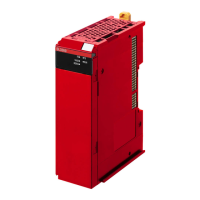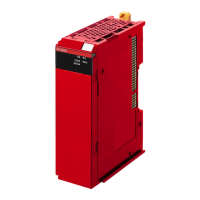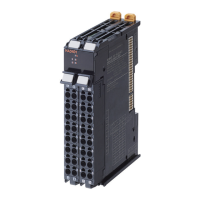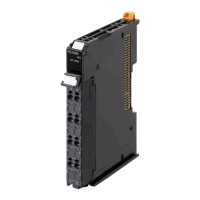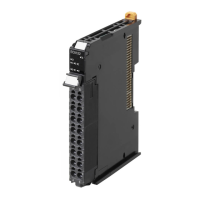Input the following values into the communications parameters that were registered as mem-
bers of the standard structure variable.
Member name of RqPath data type
Variable name
MOVE
EN
IN1
2
3
TRUE A . isAttributeID
A. ClasslD
A . InstancelD
OUT1
MOVE
EN
IN1 OUT1
MOVE
EN
I
N1
OUT1
1 A . AttributelD
MOVE
EN
IN1 OUT1
l
When an Extension Structure Variable Is Used
Example: Using an extension structure variable to input values into RqPath (Request Path) for the
CIPSend instruction
InstanceID
(Instance ID)
Create variable A with a variable with
the extension structure (_sREQUEST_PATH_EX).
CIP communications instruction
Variable A
CIPSend
RqPath
(Request Path)
RqPath data type
Value
ClassID
(Class ID)
Member
AttributeID
(Attribute ID)
_8BIT
3
256
_16BIT
isAttributeID
(Attribute usage)
AttributeID
(Attribute ID logical format)
InstanceIDLogicalFormat
(Instance ID logical format)
ClassIDLogicalFormat
(Class ID logical format)
TRUE
_8BIT
1
1 Create an extension structure variable.
To use an extension structure variable to input values into RqPath
(Request Path) for a CIP
communications instruction, first you need to create an extension structure user-defined varia-
ble.
When you create a variable in a variable table, select the pre-registered extension structure
(_sREQUEST_PATH_EX) for a CIP communications instruction.
10 CIP Message Communications
10-15
NX-series EtherNet/IP Unit User's Manual (W627)
10-2 Client Function of CIP Mes-
sage Communications
10
10-2-5 Request Path (IOI)
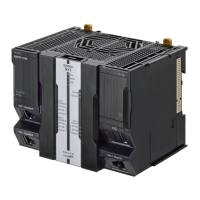
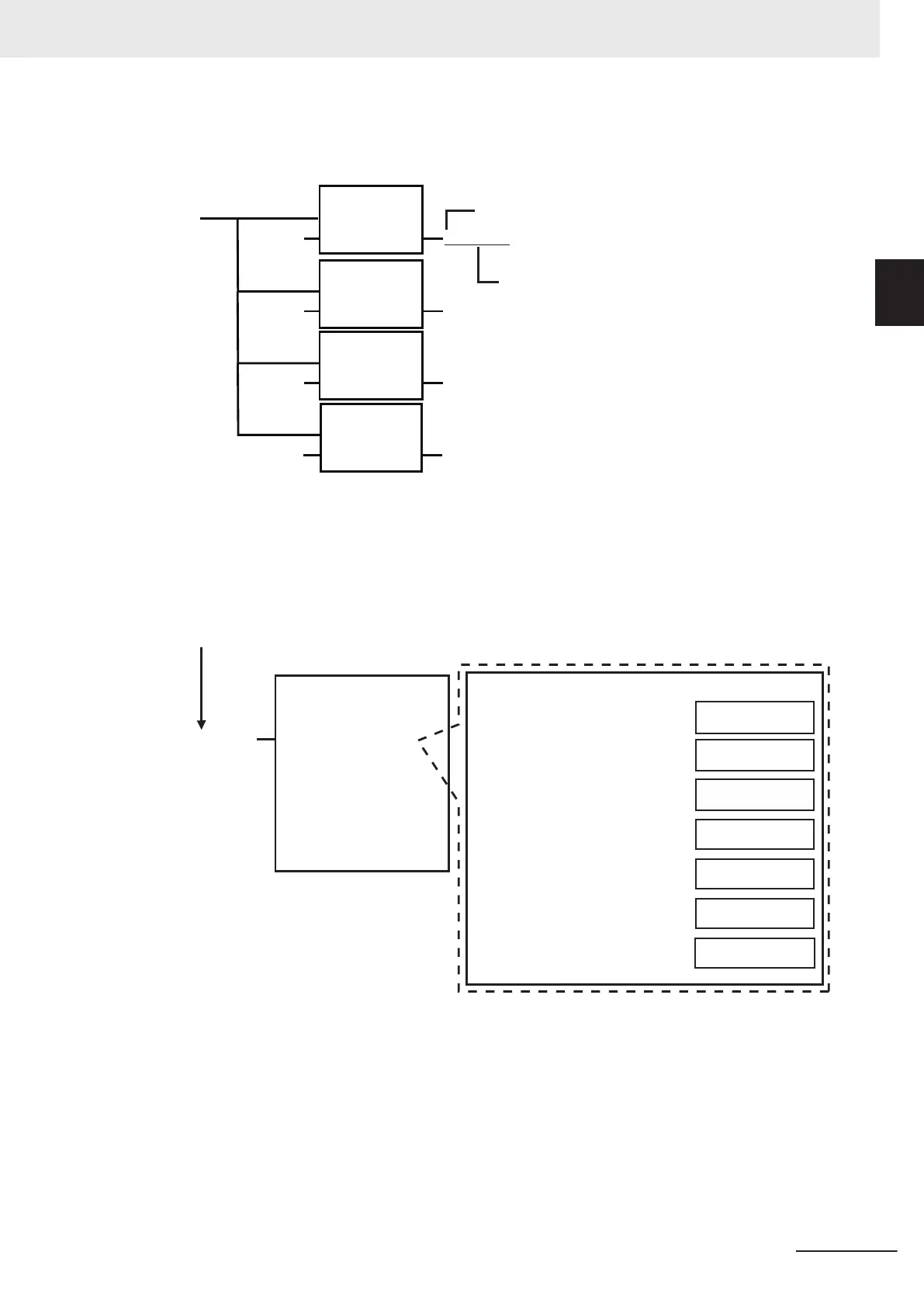